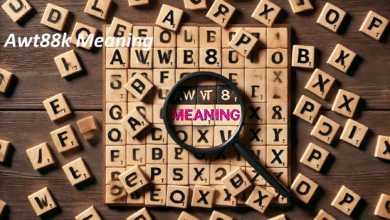Snapchat Planets: Your Ultimate Guide to the Friend Solar System Feature

Social media Snapchat Planets platforms are constantly evolving to find creative ways to visualize our digital relationships, and Snapchat has taken this concept to astronomical heights with their innovative Planets feature. Snapchat Planets, also known as the Friend Solar System, is a feature exclusive to Snapchat Plus users. It ranks your closest friends in an innovative way by comparing them to planets revolving around the Sun, which represents you. This celestial approach to friendship mapping has captivated millions of Snapchat Planets users who want to understand their social connections in a more visual and engaging way.
The concept is beautifully simple yet remarkably sophisticated in its execution. Snapchat’s implementation is similar to that of the solar system. It’s your Solar System where you are the Sun, and the surrounding planets denote your best friends on Snapchat. What makes this feature particularly interesting is how it Snapchat Planets transforms abstract social media metrics like message frequency, snap streaks, and interaction patterns into something tangible and immediately understandable – a cosmic representation of your closest digital relationships.
Unlike many social media features that can feel invasive or overly analytical, Snapchat Planets strikes a perfect balance between providing meaningful insights and maintaining the playful, lighthearted spirit that makes Snapchat unique. The feature doesn’t just tell you who your best friends are; it creates a miniature universe where your friendships have cosmic significance, making the process of understanding your social connections Snapchat Planets feel like an adventure in space exploration rather than a clinical analysis of your digital behavior.
Understanding the Snapchat Friend Solar System
If you’re a Snapchat Plus user, you’ll be the Sun in the solar system, and your top 8 closest friends will be the planets revolving around you. This means that your position in this cosmic hierarchy is always central – you’re literally the center of your own social universe, with your closest friends arranged around you in order of your interaction levels. The system creates a personalized map of your most important Snapchat relationships, turning friendship analytics into an engaging visual experience.
The beauty of this system lies in its intuitive nature. Just as planets in our actual solar system are positioned at different distances from the Sun based on their orbital characteristics, your friends are positioned as different planets based on how frequently and meaningfully you interact with them on the platform. The snapchat planets system is a way to visualize the closeness of your friendships by assigning each friend a planet in a symbolic solar system, making it easy to see who you interact with most. This creates an immediately Snapchat Planets understandable hierarchy that doesn’t require complex explanations or confusing metrics.
The algorithmic sophistication behind this seemingly simple concept is actually quite impressive. Snapchat considers multiple factors when determining planetary positions, including the frequency of messages exchanged, the consistency of your interactions, the recency of your communications, and even factors like how quickly you both respond to each other’s snaps. This multi-dimensional analysis ensures that the planetary assignments reflect genuine relationship dynamics rather than just raw message counts.
What’s particularly clever about this approach is how it motivates continued engagement with the platform. Users naturally Snapchat Planets want to see where they rank in their friends’ solar systems and work to maintain or improve their planetary positions. This gamification element encourages more meaningful interactions while providing users with clear feedback about their relationship patterns and social priorities.
The Complete Planetary Order and Meanings
The Snapchat Planets follow the exact same order as our real solar system, which makes the feature both educational and memorable. For instance, the first planet is Mercury, which represents your best friend with whom you share the most messages. This means Mercury represents your #1 best friend – the person you interact with Snapchat Planets most frequently and consistently on Snapchat. Mercury friends are typically those with whom you have daily conversations, long snap streaks, and regular story interactions.
Venus comes next as your second-closest friend, followed by Earth for your third-best friend. The progression continues through Mars (4th), Jupiter (5th), Saturn (6th), Uranus (7th), and finally Neptune representing your 8th closest friend. Each planet maintains its distinctive visual characteristics from our actual solar system – Mercury appears small and swift, Jupiter shows up large with its characteristic bands, and Saturn displays its iconic rings. These visual details help users quickly identify their position or their friends’ Snapchat Planets positions within the cosmic hierarchy.
The planetary representations aren’t just arbitrary assignments – they carry subtle meanings that reflect the nature of different friendship levels. Mercury friends, being closest to your Sun, represent those intense, frequent interactions that form the core of your Snapchat social experience. These are often your closest friends, romantic partners, or family members with whom you maintain constant digital contact. As you move Snapchat Planets outward to Venus and Earth, you’re looking at very close friends who might not chat every single day but remain consistently important in your digital social circle.
The outer planets – Mars through Neptune – represent friends who are still significant enough to make your top 8 but might have more sporadic interaction patterns. These could be good friends you see primarily in group settings, longtime friends with whom you stay in regular but not constant contact, or newer friendships that haven’t yet developed the intensity of inner-planet relationships. The beauty of this system is that all eight positions represent genuinely close relationships; making it to any planet in someone’s solar system indicates a meaningful digital friendship.
How to Access and Navigate Snapchat Planets

Accessing the Snapchat Planets feature requires a Snapchat Plus subscription, which positions it as one of the premium platform’s most popular exclusive features. Solar System is off by default for first time subscribers. To begin using it, visit the Snapchat+ feature management page to toggle it on. This opt-in approach gives users control over whether they want this level of friendship analysis visible in their Snapchat experience, Snapchat Planets acknowledging that some users might prefer to keep their relationship dynamics more private.
Once activated, the feature appears as badges on friends’ profiles, showing either a gold or bronze outline depending on your mutual friendship status. Tapping on the badge will show you which planet you are in their Solar System, with each planet representing a different position in their Best Friends list. The gold badge indicates that you’re both in each other’s top 8 friends, while a bronze badge means you’re in their top 8, but they haven’t made it into yours yet.
The interface is designed to be both informative and discreet. Rather than displaying everyone’s complete solar system publicly, the feature focuses on showing you where you stand in your friends’ rankings and revealing your own planetary system to you privately. This approach maintains privacy while still providing the social insights that make the feature valuable. Users can explore their cosmic friendships without feeling like they’re Snapchat Planets broadcasting their relationship hierarchies to their entire social network.
Navigation through the feature is intuitive, with clear visual indicators and easy-to-understand icons that guide users through discovering their planetary positions. The system provides enough information to satisfy curiosity about friendship rankings while avoiding overwhelming users with too much analytical data. This balance keeps the feature fun and engaging rather than making it feel like a complex social media audit tool.
The Psychology Behind Friendship Ranking Systems
The appeal of Snapchat Planets taps into fundamental human desires to understand our place in social hierarchies and to quantify relationships that are typically abstract and undefined. Its a fun way to see who your top friends are on Snapchat, but the psychological impact goes deeper than simple entertainment. These ranking systems provide validation, clarity, and sometimes surprising insights about our own social Snapchat Planets behaviors and priorities.
From a psychological perspective, the feature satisfies our natural curiosity about how others perceive us and where we stand in their social priorities. The mutual nature of the planetary system – where you can see where you rank in someone else’s system while they can see their position in yours – creates a form of social feedback loop that can strengthen relationships through increased awareness and intentional interaction. Users often report that seeing their planetary positions motivates them to reach out to friends they care about but haven’t communicated with recently.
The gamification elements of the system also trigger competitive instincts that can enhance engagement with both the platform and individual friendships. Users might work to maintain their Mercury position with their best friend or strive to move from Mars to Venus in someone else’s solar system. This motivation can lead to more frequent, more meaningful interactions, though it’s important to recognize that healthy relationships shouldn’t be reduced to digital metrics alone.
However, the psychological impact isn’t always positive. Some users report anxiety about their planetary positions or concern about friends who might rank lower than expected. The system can also create pressure to maintain certain ranking levels or disappointment when planetary positions shift due to natural changes in communication patterns. Understanding these potential psychological effects helps users engage with the feature in a healthier, more balanced way that enhances rather than complicates their relationships.
Maximizing Your Snapchat Planet Experience
To get the most value from Snapchat Planets while maintaining healthy relationship perspectives, it’s important to understand how the system works and what influences planetary positions. Consistency tends to matter more than volume – friends who interact with you regularly over time are more likely to maintain higher planetary positions than those who have intense but sporadic communication periods. This means that building lasting planetary positions requires sustained, genuine interaction rather than artificial attempts to game the system.
The feature works best when viewed as a fun insight tool rather than a definitive measure of friendship quality or personal worth. Real relationships involve countless dimensions that can’t be captured by digital interaction patterns – emotional support, shared experiences, physical presence, and deep understanding don’t always translate into frequent Snapchat exchanges. The planetary system reflects your digital communication patterns, which are just one aspect of your complete social relationships.
Users can enhance their experience by using planetary insights as conversation starters or relationship check-ins. If you notice a close friend has dropped to an outer planet position, it might be a good reminder to reach out and reconnect. Similarly, if someone consistently maintains an inner planet position, it confirms the strength of your digital connection and might encourage you to celebrate or acknowledge that relationship in other ways.
The key to a positive Snapchat Planets experience is maintaining perspective about what the feature can and cannot tell you about your relationships. It’s a sophisticated tool for understanding your digital communication patterns, but it shouldn’t become a source of anxiety, competition, or relationship insecurity. When used thoughtfully, it can enhance your awareness of your social connections and maybe even inspire more intentional, meaningful interactions with the people who matter most to you.
Privacy and Social Implications
One of the most thoughtfully designed aspects of Snapchat Planets is its approach to privacy and social sensitivity. Unlike some social media ranking features that broadcast relationship hierarchies publicly, the planetary system maintains a level of discretion that respects the complexity of human relationships. You can see your own solar system and discover where you rank in others’ systems, but you can’t browse through someone’s complete planetary arrangement or compare multiple people’s friendship rankings.
This privacy-conscious design helps prevent many of the social complications that could arise from a more transparent ranking system. Friends can’t see where they rank relative to each other in your solar system, which avoids potential hurt feelings or social drama that might result from discovering they’re “only” Jupiter while someone else is Venus. The system provides enough information to be interesting and useful without creating unnecessary social tension or relationship competition.
The feature also acknowledges that friendship hierarchies are natural and normal rather than something to be ashamed of or hidden completely. Most people have closer and more distant friendships, and digital communication patterns often reflect these real-world relationship differences. By presenting this information in a cosmic, playful framework, Snapchat helps normalize the reality of varied friendship intensities while making the insights feel fun rather than clinical or judgmental.
However, users should still be mindful of how they discuss or reference planetary positions with friends. While the system is designed to be discreet, conversations about rankings can still impact relationships if approached insensitively. The feature works best when treated as personal insight rather than social currency, helping users understand their own communication patterns without becoming a tool for relationship comparison or competition.
The Future of Social Media Relationship Visualization
Snapchat Planets represents a significant evolution in how social media platforms help users understand and navigate their digital relationships. The success of this feature suggests that users want more sophisticated, meaningful ways to visualize their social connections beyond simple friend lists or activity feeds. The cosmic metaphor proves that complex social data can be presented in accessible, engaging formats that enhance rather than overwhelm the user experience.
This trend toward gamified relationship insights likely points to future developments across multiple social media platforms. We might expect to see similar features that use different metaphors – perhaps musical ensembles where friends are different instruments, or ecosystem representations where friends are different species. The key insight from Snapchat’s success is that users respond positively to features that make abstract social data concrete and personally meaningful.
The educational aspect of the planetary system – where users learn about both astronomy and their own social patterns – suggests that future social media features might increasingly combine entertainment with learning opportunities. Features that help users understand not just what their social patterns are, but why they matter and how they might evolve, could provide even greater value than purely analytical or purely entertainment-focused options.
As artificial intelligence and data analysis capabilities continue advancing, we can expect even more sophisticated relationship visualization tools that consider broader ranges of interaction types, emotional tone analysis, and predictive modeling of relationship trajectories. However, Snapchat Planets demonstrates that the most successful features will likely be those that present complex insights in simple, intuitive formats that feel helpful rather than invasive, playful rather than clinical, and empowering rather than anxiety-inducing.



